Humans have only barely started to understand the ocean. Only 5% of the sea is explored and it’s also been a form of travel for centuries. This has made the ocean a strong source of inspiration for artists over the centuries. These ship paintings are a testament to this inspiration that this landscape has given over the centuries.
1. The Lady of Shalott, 1888, John William Waterhouse
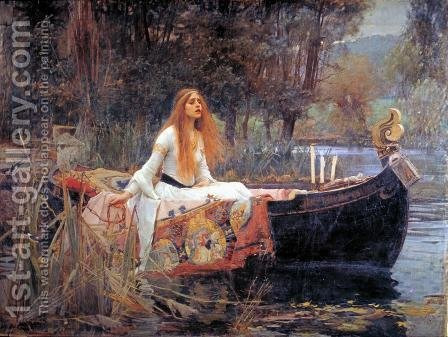
The Lady of Shalott, 1888 by John William Waterhouse is based on the ballad by Alfred Tennyson of the same name. The ship painting calls on the story of Elaine of Astolat. Elaine was an Arthurian character who was locked in a tower near Camelot. She was the subject of an unrequited love for Sir Lancelot. As his love was unrequited, Elaine died of grief, ending her story by floating in a small ship down the river leading to Camelot.
As popular as Tennyson’s poem was, this is far from the only painting with the subject matter but one of the most popular. In fact, it isn’t even the only Waterhouse painting based on Lady Elaine. However, this remains one of the most well-known paintings in Waterhouse’s repertoire.
2. Christ In the Storm On the Sea of Galilee, Rembrandt Van Rijn
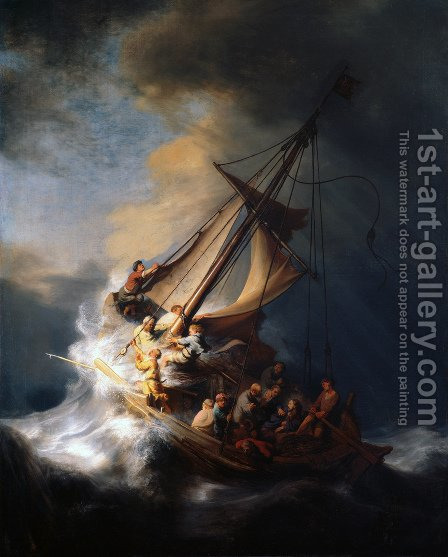
Rembrandt is a legendary name in art history and for good reason. The Storm on the Sea of Galilee is just one of his many masterpieces done during the Dutch Golden Age in 1633.
The painting references the fourth chapter in the Gospel of Mark. In the story, Jesus performs a miracle by calming the Sea of Galilee. Interestingly, this is Rembrandt’s only seascape painting, making it particularly unique.
The original was previously on display at the Isabella Stewart Gardner Museum in Boston, Massachusetts but was stolen by thieves in 1990. The investigation into the simultaneous theft of this and 12 other paintings is still undergoing.
3. A First-Rate Man-of-War Driven Onto a Reef of Rocks, Floundering In a Gale, George Philip Reinagle
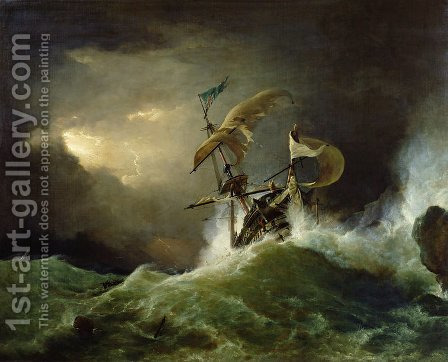
There’s a lot of beauty in a calm, landscape painting of the sea but there’s a lot of opportunity for symbolism and demonstration of technical skill in other settings. This latter opportunity is the one that George Philip Reinagle took in his painting A First-Rate Man-of-War Driven Onto a Reef of Rocks, Floundering In a Gale.
The painting depicts a man-of-war asea during a tumultuous storm. The detail lies not only in the crashing waves but in the sun peeking through the clouds as well. There is also a great amount of care in the intricacies of the ship design and sails.
4. Miranda – The Tempest 1916, John William Waterhouse
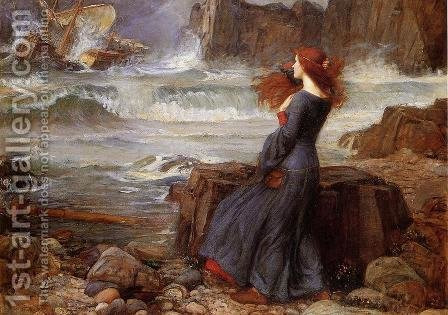
The Tempest is a Shakespearean play that takes place, at first, on a ship at sea and then the remote island it crashes on. Miranda is one of the main characters and the daughter of a
sorcerer named Prospero. She’s the only on-stage female character in the play and one of only a few mentioned in the story at all. Alongside her father, she is banished to the island at a young age although she only learns of this fate as the story starts. She also serves as the love interest to another main character, Ferdinand, as soon as the two characters meet.
This is the seaside story that Waterhouse took his inspiration from in painting Miranda – The Tempest. In the painting, the viewer can see Miranda looking out from the island shore over the shipwreck she later begs her father to spare the survivors of.
5. Cave of the Storm Nymphs, 1903, Sir Edward John Poynter
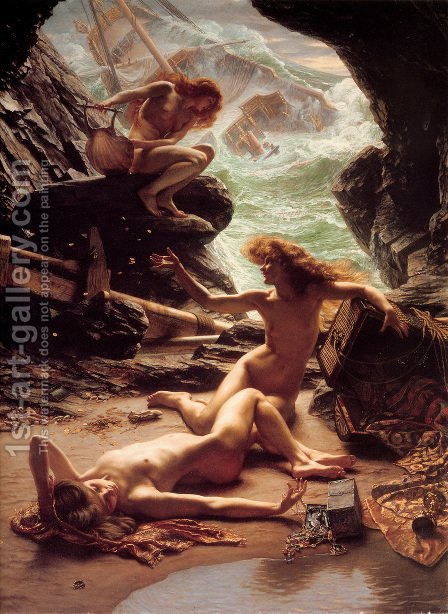
Nymphs are characters of Greek mythology that are often mentioned in association with the elements or locations. While they are typically portrayed as minor characters, they’re also frequently reoccurring characters in many different myths.
In the Edward Poynter painting, they are referred to in much the same way they are in epics like The Oddysey. While nymphs are almost always portrayed as beautiful young women, the imagery in this painting highly suggests that these nymphs have lured men to their deaths by guiding ships to the rocks. By the treasures in the cave, it’s suggested that these sirens have looted the remains of their lure.
The painting was preceded by a preparatory study drawing in 1901. The first version of the painting was completed in 1902 with the final draft of the painting – seen above – releasing in 1903.
Conclusion
The seaside has long been a source of inspiration for artists and these masterpieces attest to the potential that this muse offers. This is only a sample of the ideas that this type of landscape has produced over the years. There are plenty of other ship paintings to explore that touch on topics ranging from the hyper-realistic to the fantastical.
